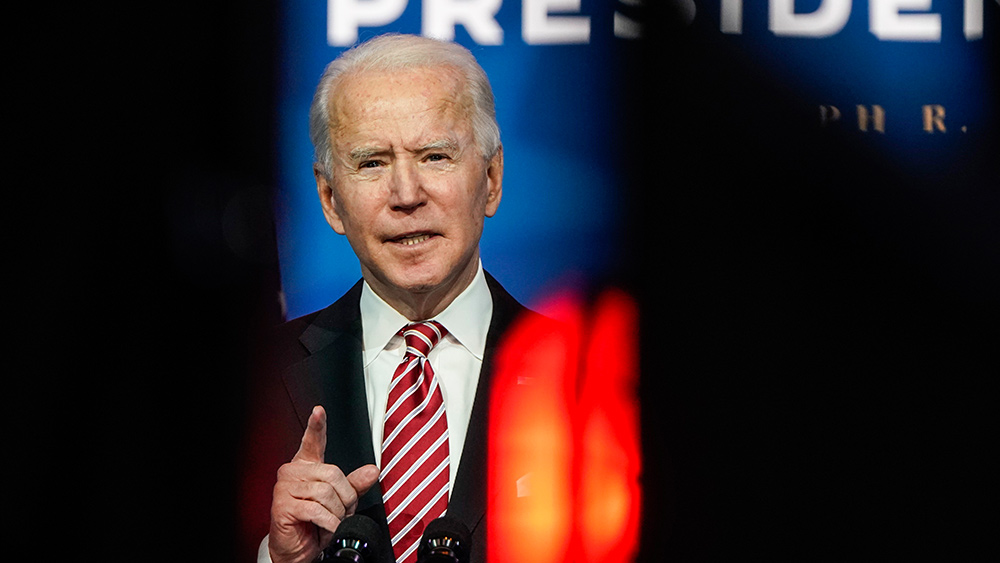US businesses looking to fill 10M job openings as economy reopens
08/11/2021 / By Mary Villareal

Employers are looking to fill 10 million job openings with fewer workers than jobs available. Last week, the Department of Labor reported that around 8.7 million potential workers who are looking for jobs counted among the unemployed. At the same time, the job placement site Indeed estimates that there are about 9.8 million job vacancies as of July 16, 2021.
Companies are beginning to get the hang of making projections again and are staffing up to capture the booming demand of positions across online listings. However, to entice workers, companies are using various techniques, such as offering signing bonuses, higher salaries and flexible working arrangements. This practice will likely continue as the COVID-19 pandemic changes the job market.
Scott Hamilton, global managing director for the human resources and compensation consulting practice at global insurance brokerage and consulting firm, Gallagher, said: “This is one of the most complex labor markets in recent memory. One of the biggest factors is employers are essentially having to buy back job applicants’ COVID lifestyle.”
A recently released survey from Gallagher showed the extent to which employers are willing to entice workers during the pandemic. (Related: Growth of food stamps 75 times faster than job growth in America.)
Some 41 percent said they are offering enhanced benefits, such as pet insurance. They also provide discount programs, legal services, and identity theft protection, although 71 percent noted that medical and pharmaceutical benefits remain the most important added benefits being offered.
Job growth has been surging, and July’s numbers were reported to be the biggest spike since August 2020. However, there is more work to be done as there are still fewer Americans working today compared to February 2020.
Job regrowth, not labor force participation
“Labor force participation is flat, so this is just job regrowth. All the big jobs numbers are great, but we’re still growing into lost jobs. So it’s going to get slower as folks are coming back into the market with changed expectations and changed lifestyles,” said Hamilton.
An important factor, however, is the looming expiration of unemployment benefits in September. Many workers have refrained from taking jobs they didn’t want because they had enough financial cushion to wait, but even with concerns of the virus, the need to work will eventually start to grow.
“Money issues seem to be a rising concern among unemployed workers not searching urgently. More of them said the end of [unemployment insurance] benefits or financial cushions running low were major milestones that could prompt them to take a job,” said Nick Bunker, Indeed’s economic research director.
The total number of employed individuals is still well below pre-pandemic levels. However, it did improve by over one million in the past year. Labor force participation increased to 61.7 percent, and the unemployment rate slid to 5.3 percent. This gauge measures the employment level compared to the total working-age population, which rose to 58.4 percent since March 2020.
Workers had been discouraged after sending out resumes and seeing rejection after rejection coming in.
“When people lose their jobs, they often engage in a flurry of job search activity, they send off 20 applications, and then they sit back and wait to hear back from employers,” Julia Pollak, labor economist for ZipRecruiter, said. “So many people are most engaged in their job search early on when it was most discouraging and their prospects were bleakest.”
As summer ends, there remains an unusual burden of convincing workers to fill historically high levels of job openings, which is critical to the economy. There are plenty of reasons for workers to still hang back, such as the concern for the coronavirus, childcare and remote learning, family obligations, and even holding out to better opportunities.
There are also other unstated factors.
Bhushan Sethi, a global people and organization co-leader at PwC consulting agency, said, “It’s not just labor demand and supply, these are tough working conditions. I can’t underscore enough the real concern of individuals,” he said. Am I safe? Will I be forced to trade personal safety around the virus and variants for a job?”
Despite starting with historic layoffs, American workers may find themselves this year with more bargaining power than they did before.
Read more updates about job growth and the economy at Bubble.news.
Sources include:
Tagged Under: Bubble, coronavirus, Department of Labor, economic growth, economy, financial crisis, job growth, job regrowth, money issues, pandemic, risk, United States labor force
RECENT NEWS & ARTICLES
COPYRIGHT © 2018 MONEYSUPPLY.NEWS
All content posted on this site is protected under Free Speech. MoneySupply.news is not responsible for content written by contributing authors. The information on this site is provided for educational and entertainment purposes only. It is not intended as a substitute for professional advice of any kind. MoneySupply.news assumes no responsibility for the use or misuse of this material. All trademarks, registered trademarks and service marks mentioned on this site are the property of their respective owners.


















